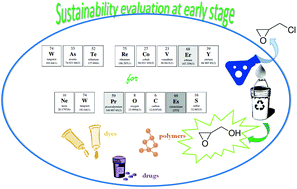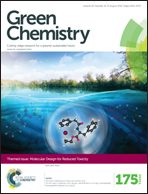A simplified early stage assessment of process intensification: glycidol as a value-added product from epichlorohydrin industry wastes†
Abstract
The present work deals with the production of glycidol through a new synthetic approach based on the conversion of 2-chloro-1,3-propanediol (β-MCH), a by-product in the epichlorohydrin production plant. β-MCH was converted with high yield (90%) and selectivity (99%) to glycidol using an alcoholic solution of KOH at room temperature in only 30 minutes. A simplified early stage assessment based on the use of the green metrics and a life cycle analysis were adopted in order to evaluate the environmental feasibility of this innovative route if compared with the traditional chain to epichlorohydrin. The waste recovery and the maximization of the overall process efficiency lead to sensible reductions per each indicator considered in the assessment, suggesting the possibility of developing on a full industrial scale. In addition, in order to verify the potentialities behind the substitution of the fossil-based glycidol with the product resulted from the recovery of the β-MCH, a cradle-to-gate analysis and the GREENMOTION® tool were adopted.


 Please wait while we load your content...
Please wait while we load your content...